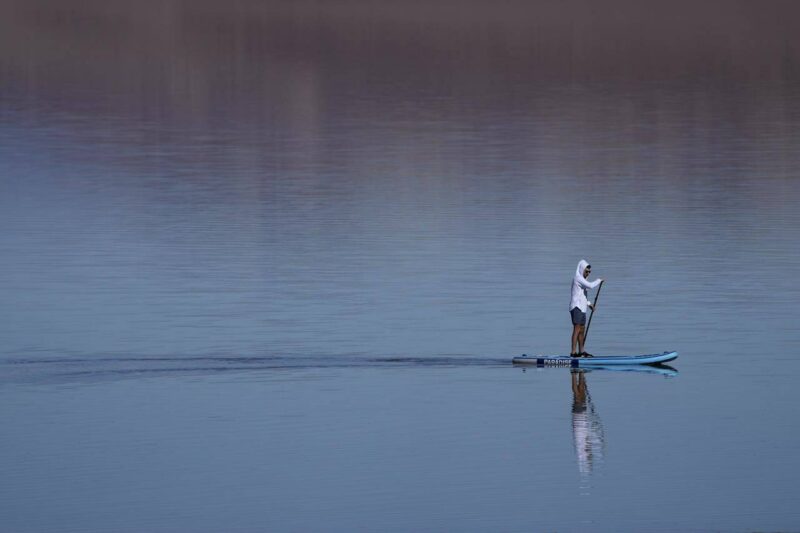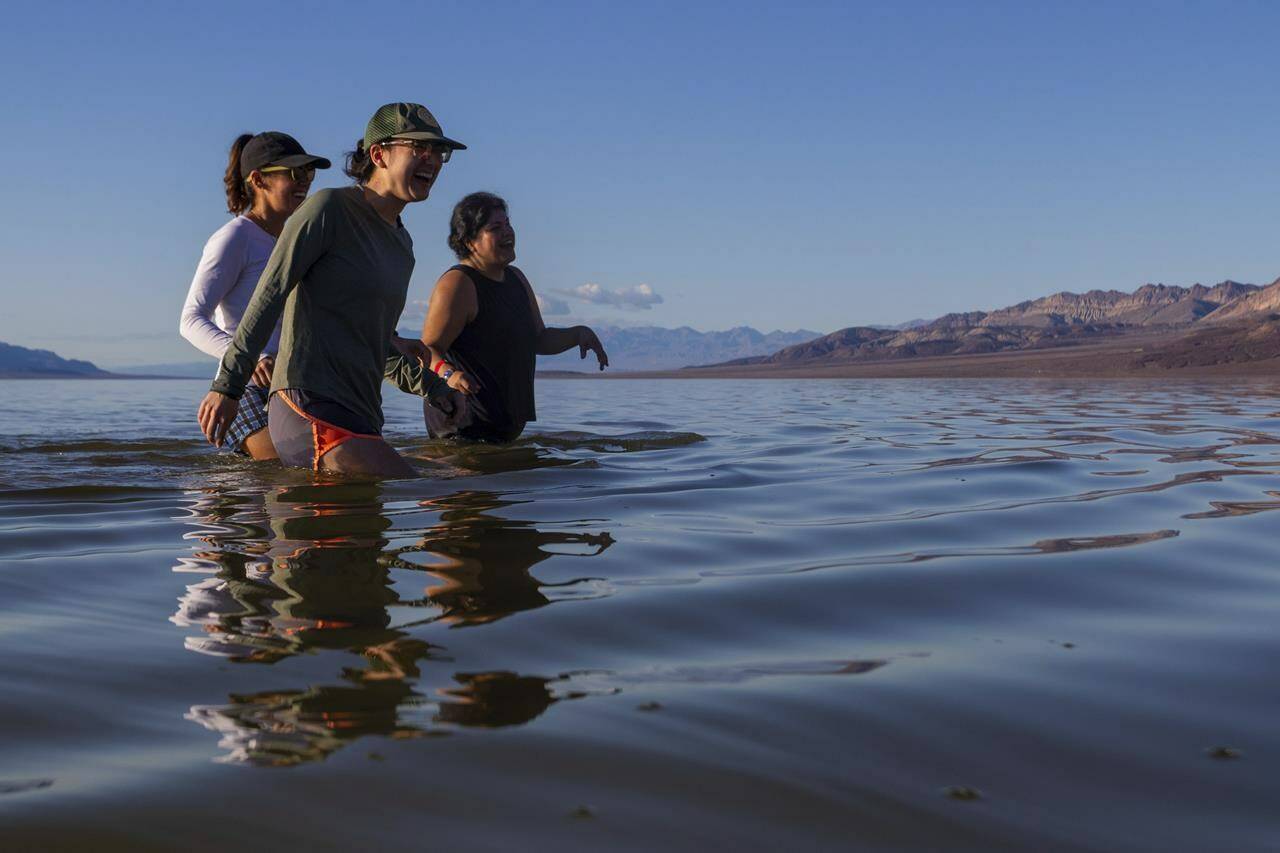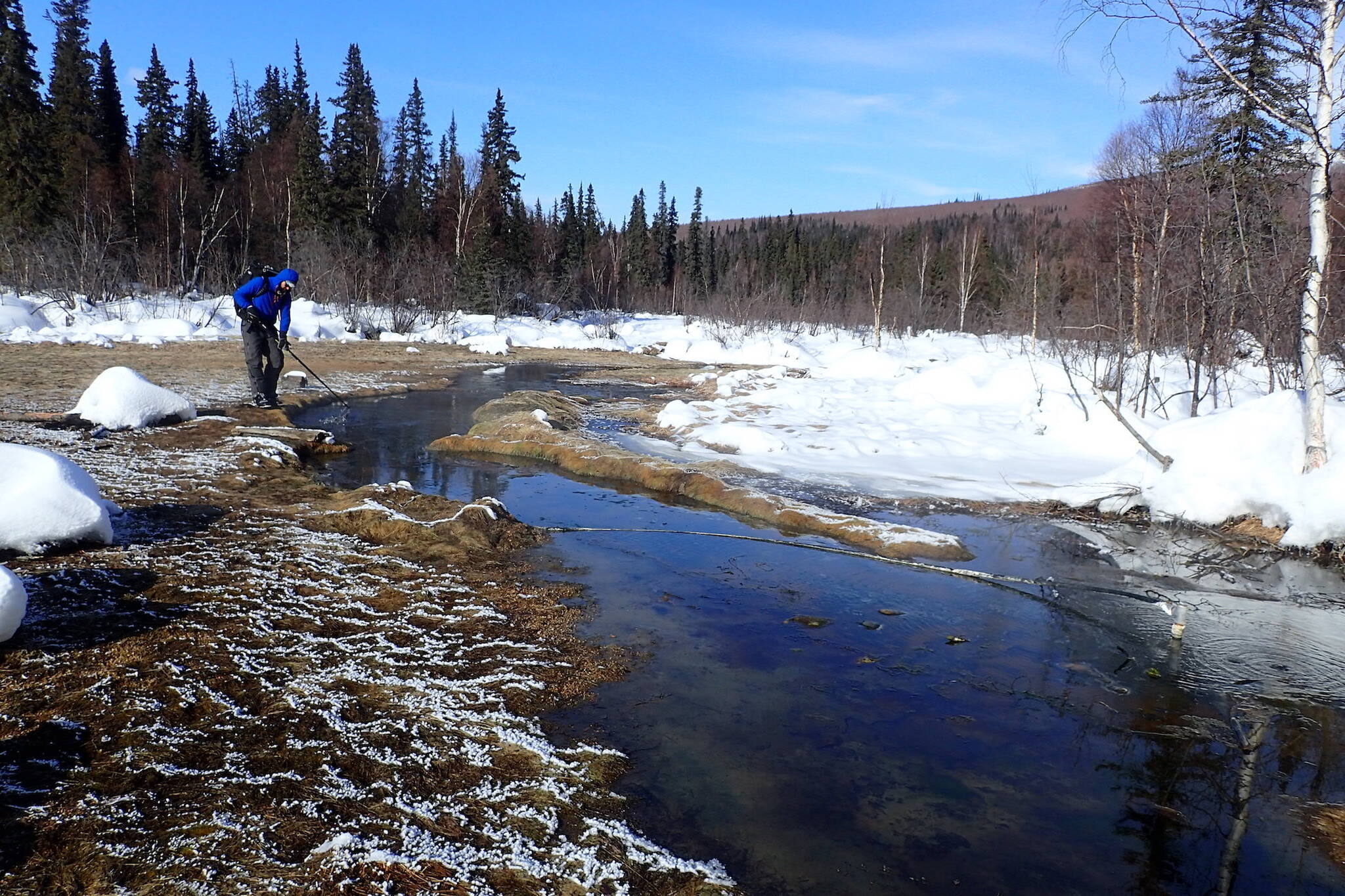Kayakers have been paddling in one of the driest places on Earth after a series of record rainstorms battered California’s Death Valley and replenished Lake Manly.
Park Ranger Nichole Andler said Badwater Basin at Death Valley National Park, which runs along part of central California’s border with Nevada, “is normally a very beautiful, bright white salt flat.”
This year it’s a lake.
In the past six months, Death Valley has received more than double its annual rainfall amount, recording more than 4.9 inches (12.45 centimeters) compared to a typical year that gets about two inches (5.08 centimeters). Temperatures at or above 130 F (54.44 C) have only been recorded on Earth a handful of times, mostly in Death Valley.
Badwater Basin is the lowest point in North America at 282 feet (85.95 metres) below sea level and has been a favored spot for tourists to take selfies and briefly walk along the white salt flats ringed by sandy-colored mountains.
“It’s the lowest point, in North America. So it’s going to collect water, but to have as much water as we have now — and for it to be as deep and lasting as long as it has — this is extremely uncommon,” Andler said. “If it’s not once-in-a-lifetime, it’s nearly.”
READ MORE: A wet winter yields a riot of spring blooms in California
Andler said kayakers should come soon since water levels are expected to drop in a matter of weeks, though the lake “will probably be here into April. If we’re lucky, May. And then it’ll be a muddy, wet mess, and then it’ll dry out into those gorgeous white salt flats.”
On Thursday, Heather Gang of Pahrump, Nevada, and her husband, Bob, were among hundreds of visitors playing in the water. Most waded into the lake, though the couple and others paddled where the water reached up to about a foot (0.3 metres) deep in parts.
“It’s a once-in-a-lifetime opportunity to kayak Lake Manley,” Heather Gang said.
It was a sharp contrast to the Death Valley of the past where they figured they had once stood around the same spot and looked at the chalky salt flats for as far as the eye could see.
The couple has been eyeing the lake’s evolution ever since last year’s storms started filling the lake. In the fall, they drove out to see it re-emerge as a lake but they said it wasn’t deep enough for kayaks like now. This time the water reached up to the boardwalk.
The lake, which is currently about six miles (9.66 kilometres) long and three miles (4.83 kilometres) wide, is still nowhere near its original state thousands of years ago after it formed during the Ice Age and covered a significant part of the park and was several hundred feet deep.
Bob Gang said he had heard the lake had filled up to the point that boaters could go on it about 20 years ago, so he didn’t want to miss out on the experience this time.
“It’s a lot of fun,” said Bob Gang, who gave a girl a ride on his kayak. “It’s good to see the little kids out here enjoying this and seeing something totally unique.”
It could be another 20 years before boaters return, he added, but “with climate change, who knows, maybe this will be the normal.”
Guo Yu, an assistant research professor of hydrometeorology at the Nevada-based Desert Research Institute, said the lake’s size is a “simple natural phenomenon.”
It’s linked to a wet winter from a strong El Nino — a natural and occasional warming of part of the Pacific Ocean that can lead to more precipitation than usual in California — plus climate change, which brings more intense atmospheric rivers to the area more frequently, Yu said.
Scientists need to study Lake Manly now, he said, to see if they can harness the water for other uses in the future, such as drinking water throughout the dry Southwest.
Tiffany Pereira, an associate research scientist at the institute, said the lake’s size now can be beneficial to local flora and fauna.
Certain seed species endemic to the area, meaning they only naturally exist in Death Valley, have lain dormant for a decade or more and are now beginning their short-lived life cycle because there is enough water to sustain them.
“They hang out, they do their thing, and as soon as it dries up, that’s it. They’re done,” she said.
For now, friends Trudell Artiglere and Sheri Dee Hopper of Las Vegas will enjoy paddling through the lake. At the end of the day on Thursday, Artiglere said, their salt-encrusted kayaks looked like “glazed donuts.”
Ty O’neil, John Locher And Stefanie Dazio, The Associated Press
Dazio reported from Los Angeles. Associated Press writer Julie Watson in San Diego contributed.
Plan your adventures throughout the West Coast at westcoasttraveller.com and follow us on Facebook and Instagram @thewestcoasttraveller. And for the top West Coast Travel stories of the week delivered right to your inbox, sign up for our weekly Armchair Traveller newsletter!












 Soak in Alaska’s natural hot springs
Soak in Alaska’s natural hot springs